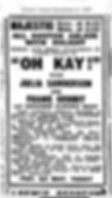- Bob Abel
- May 1
- 2 min read
160 years ago on Saturday April 15, 1865, the residents of Longmeadow, Massachusetts, like the rest of the nation, would learn that President Abraham Lincoln was dead. After five long years of war and many lost lives in the war, the shock was almost unbearable. Three weeks of events were held to mourn the death and memorialize the life of the 16th President of the United States. Funeral services, a procession, and a lying in state were first held in Washington, D.C.. Then a funeral train transported Lincoln's remains 1,654 miles through seven states for burial in Springfield, Illinois. Never exceeding 20 mph, the train made several stops in principal cities and state capitals for processions, orations, and additional lying in state. Many Americans viewed the train along the route and participated in associated ceremonies, but it did not travel to New England.

About five years earlier Eleazar Storrs moved his family back from Springfield, Massachusetts to the Storrs family home in Longmeadow, the parsonage built by Rev. Richard Salter Storrs in 1786. Eleazar upgraded both the interior and exterior to reflect the fashions of the day. He added porches, roof cresting, and an ell to the rear of the house.
At some point after the completion of the exterior work Eleazar had the house photographed. Several photographs were taken, and the prints are in the archives of the Longmeadow Historical Society at the Storrs House.

One of these photographs is different from the others. One picture shows the house decorated with bunting and ribbons wrapped around pillars.

At first glance the picture looks like a celebration, perhaps the 4th of July or the Longmeadow Centennial in 1883. Using modern technology and colorizing the picture revealed a sadder truth.

The bunting is black crepe. The Storrs' house is draped in mourning. Since Presidents Garfield and McKinley died in the fall, the green shrubs helped us focus on the Lincoln Assassination.

Further computer manipulation to create a close up of the peak pediment revealed even-rowed 35-star flags. The image in the middle is probably President Lincoln on his deathbed. These images were readily available either printed on paper or canvas in many variations based on sketches done by newspaper reporters all over the country. This one is possibly a cropped of this popular version:

Many local remembrances and ceremonies took place during the three weeks of national mourning and long after during civic engagements of all sorts. More immediately, the Storrs family was among the citizens of Longmeadow and other local cities and towns took up “the work of mourning”.
Sources:
Death bed of Abraham Lincoln - NYPL Digital Collections
Flag of the United States – Wikipedia
Longmeadow Historical Society archives
Springfield Republican Archives
State funeral of Abraham Lincoln – Wikipedia















